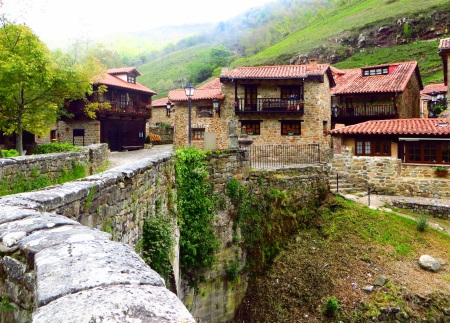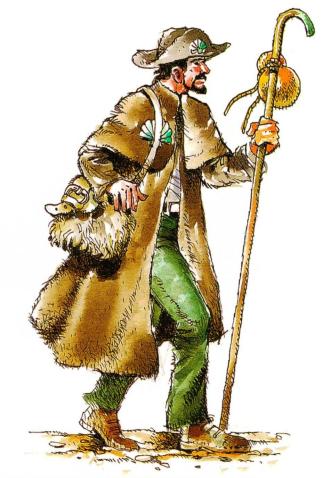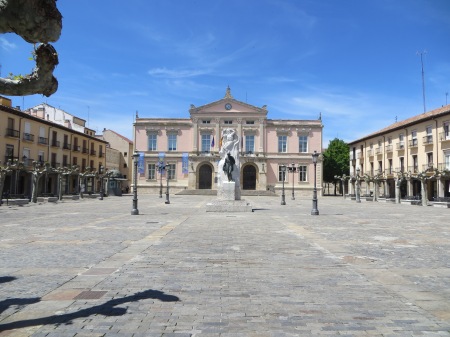The Beaches of Asturias…
This was the final stage of the long journey and we kept stubbornly to the coast road and took our time as we stopped off regularly at beaches along the way.
The first that we came to was just outside of the town of Llanes and we took the road which swooped down to Playa de Toro which translates as the beach of bulls and although I can find no explanation for this I assumed that it was on account of the natural sculptures, little pronounced pinnacles – rocky outcroppings leaping up out of the caramel sand, skeletal survivors of the erosion action of the sea on calcareous rock and which, with a little imagination could be said to resemble a herd of black bulls charging into the surf.
At the back of the beach only a few kilometres away the Cantabrian mountains soared into the sky and as they did they collected all of the clouds that were sweeping in from the sea and here their progress was stalled like traffic at a motorway incident and they joined together in a sort of cloud congestion that grew darker and darker and obscured the peaks of the natural barrier between land and sea.
By contrast it was very sunny down on the beach and we wandered along the shoreline and watched the incoming tide before resting a while at a beach side restaurant and sat outside with diners who were tucking into the menu del dia. We were tempted to join them but our plan was to eat in mid afternoon in preparation for the journey home so we resisted and carried on.
Lets Go Fly A Kite…
As we drove west the beaches on the Cantabrian coast come thick and fast and we stopped to admire the Playa de San Antonin where Atlantic breakers rolled in one after another and where surfers were practising the moves and then came across a beach, the name of which I carelessly forgot to find out where there was a gathering and an event and what looked like a thousand kites being flown in the sky.
We turned into the car park and walked along the sand and the grassy headland and admired the range of kites on display from the simple things that I remember from my boyhood holidays (two bits of wood, some plastic and string) to some very complex exhibits which I assume required great skill to keep up in the air. I was glad that we had stumbled upon this because it was one of those Spanish festivals/events which includes all of the family and is quite unlike anything in the UK.
All of a sudden time was ticking by quite quickly and it was getting close to our intended lunch stop so we left the hobby kite fliers and continued on to the seaside town of Ribadesella and found a parking spot in a strangely solumbulant Saturday afternoon town where boats rested in the water and the seafood restaurants were serving unhurried food to relaxed diners and there was a lazy ambiance as we strolled along the harbour street looking for a restaurant.
There were a number to select from but as the sun was shining and this might well have been the best weather of the entire week we wanted to find a table in the sun and we had to walk practically the entire length of the harbour to find one. Tables in the sun are generally free because local diners prefer the shade and this was no exception as we settled ourselves down for lunch.
We choose the four course menu del dia which turned out to be wonderful and we sat and ate and shared the bottle of red wine and reflected on our journey. It had been an excellent week and we had enjoyed every place that we had visited. Castilla y León is not the most attractive region in Spain but it is encrusted with the jewels of the cities that stand out like diamonds and more than compensate for the dreary landscape and we had enjoyed our itinerary which took us through most of Spain’s largest Autonomous Community.
After lunch we walked through the streets of the town but our visit had clearly coincided with the afternoon siesta and many places were closed and those that were open were not very enthusiastic about receiving customers so after a walk through the town and a last look at the harbour we returned to the car and headed for the Autovia del Cantabria for the very final stretch of our drive.
The road took us south of the industrial towns of Gijón and Avilés we sped past without stopping, filled the hire car with fuel and then made our way back to the airport and the late evening flight home to London Stansted.










![altamira[1]](https://apetcher.files.wordpress.com/2013/01/altamira1.jpg?w=450&h=330)









































